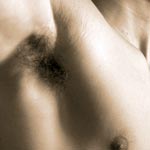I read your comment reccommending a 15 yo guy to wait until he’s 30 to see if he has hair loss then decide on a hairline lowering surgery. I am 31 and am considering the surgery to shorten my long forehead. I am not really sure if it is receding (must be really slow if it is), though my father’s did not until he is 50. Did you imply that hairline is not likely to recede (at least not quickly) after the age of 30?
Thanks a lot!
A receding hairline after the late 30s is unusual, but it happens. You may take after your father and recede later in life. Using Propecia is one thing that allows you to be more proactive about hair receding, rather than waiting for completion of the hair loss, but you must have a proper diagnosis so that you know what you are treating if you elect to do something about it. This way you can prevent future hair loss to some degrees, at least on the top and crown area, and take care of the frontal hairline with a hair transplant.
Taking medication before the process starts on the expectation of hair loss is certainly not something that I would recommend for my young readers who worry about what might happen to them. A long forehead (high forehead) is easy to treat with hair transplants and wonderful results are a reasonable target. You can see many, many patient results in the New Hair Institute Patient Photo Galleries.



 It is good that you started using Propecia for your thinning crown hair. Although you don’t think you had improvement with medications, I think it is best for you to continue the Propecia, for you never know how your crown would look if you were not taking the medication. Propecia should be the first line of treatment of crown hair loss in most patients. The next option is to fill the crown balding area with transplants using permanent hair from back of the head. Using the hair from this area is well established for transplant to your crown area. Body hair, as we’ve discussed on this site
It is good that you started using Propecia for your thinning crown hair. Although you don’t think you had improvement with medications, I think it is best for you to continue the Propecia, for you never know how your crown would look if you were not taking the medication. Propecia should be the first line of treatment of crown hair loss in most patients. The next option is to fill the crown balding area with transplants using permanent hair from back of the head. Using the hair from this area is well established for transplant to your crown area. Body hair, as we’ve discussed on this site  The medications of topical minoxidil or systemic Propecia (finasteride 1mg) should not cause more hair to appear on your already hairy body. If you have a full Norwood Class 6 or 7 balding pattern, then chances are that these medications may not help. The marginal edges are where such patterns may see benefit, but you need to get a good doctor to help. Body hair transplants are not the solution (see
The medications of topical minoxidil or systemic Propecia (finasteride 1mg) should not cause more hair to appear on your already hairy body. If you have a full Norwood Class 6 or 7 balding pattern, then chances are that these medications may not help. The marginal edges are where such patterns may see benefit, but you need to get a good doctor to help. Body hair transplants are not the solution (see